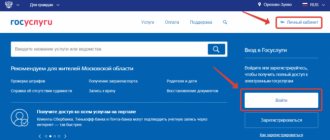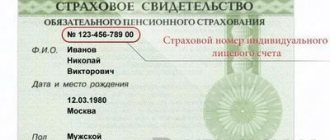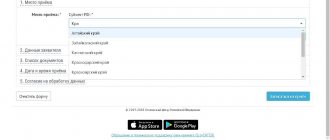Since 2021, users of public services began to receive notifications about the assignment of debt according to SNILS. Notifications can be sent via SMS or email. It also opens immediately upon entering government services. The notice only indicates the amount of debt, but there is not a word about the grounds for collection. We will tell you in this article what it means to assign a debt according to SNILS, and how to find out more about the reasons and grounds for collection.
What does it mean to assign debt according to SNILS?
When collecting debts, the identity of the debtor must be established. To do this, the plaintiff submits documents and information that confirm the formation of the debt and the identity of the debtor. One of the identifiers of a citizen’s identity is SNILS. This is the insurance number of a personal account opened with the Pension Fund. When opening and maintaining an account, the identity of the insured person is confirmed using passport data and other documents.
When issuing a writ of execution or a court order, they may indicate the SNILS and TIN of the debtor. The bailiffs need this information to collect money from the proper debtor. If we are talking about collection of loans, alimony, civil transactions, information about such debt will not appear on government services. If any types of payments to the federal, regional or municipal budgets are collected, the government services website will automatically determine such debt according to SNILS.
The assignment of debt under SNILS is the “linking” of payments collected into the budget to a specific user of government services. When registering for public services, a citizen must indicate passport data and SNILS. As soon as the system sees that any payment or fine has been collected from a citizen for budget revenue, it will link it to the SNILS number. It is in this case that the user of public services will receive a notification that he has been assigned a debt according to SNILS.
Why do you need SNILS for debt collection?
SNILS is a unique number that remains with the citizen for life. The number is assigned not only at the request of citizens, but also automatically - according to the information of the employer, according to the registry office data on the birth of the child. The main purpose of SNILS is to record incoming insurance contributions for the formation of pension savings, length of service and points. When collecting debts, SNILS is used for the following purposes:
- as one of the debtor’s identifiers - from 2020 they must be indicated when filing a claim or application for a court order (in addition to SNILS, you can use passport data, INN, driver’s license details);
- to systematize collected debts into federal databases - for example, the Federal Tax Service and a number of other departments allow you to check the presence of debts by last name, SNILS or TIN;
- for the distribution and crediting of payments for taxes, fees, fines and other obligations to the budget - the presence of SNILS allows you to correlate information about the payer and the debtor, and take into account the payment in relation to the proper person.
If the debtor is not registered for public services, he will not receive a notification about the assignment of debt according to SNILS. But in this case, collection will follow the general rules, i.e. through bailiffs, by deductions at the place of work or from bank accounts.
Let us note that when collecting any debts by state and municipal departments, it is very easy to establish the SNILS of the debtor. For example, when collecting taxes and fees, the Federal Tax Service and the Pension Fund initially have this data. Administrative fines may be collected without specifying the SNILS number in the resolution. However, when their forced retention begins, SNILS will also be used to identify the debtor.
Find out your tax debt? Easily
Citizens, as practice shows, ignore their tax debts en masse.
Ignoring this occurs both from ignorance of the law and from ordinary carelessness and constant delay in payment. In addition, sometimes citizens do not receive tax notices about the need to pay taxes in a timely manner. As a result, taxpayers become confused and do not remember what taxes and in what amounts they need to pay. The need to go to the tax authorities in order to find out about tax arrears usually frightens citizens due to long queues at tax offices. A list of services provided in electronic form by the Federal Tax Service of Russia will appear. You need to choose the very first one. Click on the button with this inscription.
What types of debts can be assigned according to SNILS
They can “assign” debt according to SNILS through government services if it is collected into the budget of any level. If you receive such a notice, then you have one of the following debts:
- all types of taxes from individuals (for real estate, transport, land);
- fees and insurance premiums that individuals are required to pay for themselves (for example, insurance premiums for individual entrepreneurs);
- professional income tax paid by self-employed people;
- administrative and criminal fines (for example, traffic police fines for violating traffic rules);
- a fee collected into the budget after a trial;
- enforcement fee assigned by the bailiff.
Debts for other types of debts are not taken into account through public services if they are not collected in favor of the budget. Also, you will not receive a notification about debts collected from a legal entity.
Collection of these debts can be carried out through judicial or administrative procedures. Therefore, notification from government services may be related to:
- with the issuance of a resolution by an official, state or municipal body;
- with the issuance of a writ of execution after the claim is satisfied;
- with the issuance of a court order, which is drawn up on undisputed obligations.
Unfortunately, the type of executive document itself is not deciphered in the notification of public services. Therefore, many citizens do not pay attention to SMS or email, after which they may unexpectedly encounter money being written off from their card or their account or property being seized.
GIS-GMP system
To understand how the mechanism for assigning debt under SNILS works, you need to know about the GIS-GMP system. This is a state information system that displays information about all state and municipal payments. As soon as the time comes to pay the tax or a fine is collected from the citizen, this data will appear in the GIS-GMP. When the debt is paid or submitted for collection, this data is also recorded in the GIS-GMP.
Public services receive information from GIS-GMP automatically. Data about the debtor is verified with information about users of the public services portal. If the information matches, a corresponding notification is sent. In order not to indicate all personal data in the notification, SNILS will be listed there instead. After full payment of the debt in the GIS-GMP system, the payment will be distributed to the appropriate budget.
Official Website of State Services, registration, login, application for a foreign passport, payment of fines
If the user has already indicated the TIN on the website, by installing the application he can immediately see his tax and legal debts. The “Appeal” button has been added - it appears next to all debts and fines. The citizen presses a button - the support service receives the request, after which it will consider your problem.
Information on the Unified Portal of State and Municipal Services (functions) is posted within one working day from the Consolidated Register of State and Municipal Services (functions) formed by the federal and regional authorities of the Russian Federation, local governments which are responsible for the completeness and accuracy of information about services (functions) ). The single portal is accessible to any user of the Internet information and telecommunications network and is organized in such a way as to ensure simple and effective search for information on state or municipal services.
Who is involved in debt collection under SNILS
Bailiffs are directly involved in withholding collected debts. Also, in some cases, it is allowed to send documents for retention at the place of work, to the bank where the debtor has deposits and accounts. The executive document, according to which FSSP employees will work, can be issued by:
- courts (for example, when collecting a fine in administrative cases);
- officials of certain state and municipal bodies (for example, the chief inspector of the Ministry of Emergency Situations can issue fines for violations of fire safety);
- state and municipal bodies (for example, Federal Tax Service, Rospotrebnadzor, Pension Fund, etc.);
- bailiff conducting enforcement proceedings.
It depends on who collected the debt which databases this information will go into. For example, a fine for violating traffic rules is recorded in the traffic police database, and tax debt is recorded in the Federal Tax Service register. At the same time, information about all enforcement proceedings is available in one place - in the Data Bank on the FSSP portal.
Checking SNILS: how to check pension savings by SNILS number
But today there are online resources that allow you to check your SNILS number online. For example, using the link https://mosgorcredit.com/index/poisk_strakhovogo_nomera_individualnogo_licevogo_scheta_snils/0-62 you can use the SNILS number to find out who it belongs to. To do this, you just need to enter the number in the line.
check SNILS for pension savings via the Internet or by contacting the Pension Fund directly. To do this, you will need a SNILS number and an identity document. how to check SNILS correctly and quickly.
How to check the purpose of debt according to SNILS
Having received a notification from government services, you can decide to pay the debt, or try to appeal and cancel it. To do this, you need to find out on what grounds the debt was attached to your SNILS and who collected it. Read below to find out where you can get this information.
Public services
Since 2021, government services have been running a service that allows you to obtain data on all enforcement proceedings. Using this request, you can find out what debts the bailiffs are collecting from you. Through government services you can:
- find out online a list of all open production facilities (information is provided instantly);
- receive a report on the progress of enforcement proceedings (in this case you will receive a file in your personal account or by email).
You can also immediately proceed from government services to pay the debt if you agree with its amount and the grounds for collection.
Please note that by requesting information about your enforcement proceedings, you will be automatically notified of procedural actions and deadlines. For example, this will be important for determining the period of 5 days for voluntary payment. Even if you have not received a resolution from the bailiff, but have requested a report from government services, the deadline for voluntary payment will begin to run automatically.
Bailiffs website
The FSSP portal has a data bank with all enforcement proceedings. Information can be searched by last name and TIN. The Data Bank will contain the following information:
- production number;
- amount of debt;
- basic information about the act under which the debt is collected;
- information about the FSSP unit, the bailiff.
Thus, you can check the amount of debt from the notification of public services and information on the FSSP website.
Please note that the FSSP Data Bank is updated with some delay. The delay in updating information may be 7-14 days. If you have received a notification from government services, but there is no information about debts on the FSSP website, we recommend checking the information again in 1-2 weeks.
Traffic police website
The traffic police website has its own online service for fines for traffic violations. For these fines, debt may be assigned according to SNILS. Therefore, we recommend that you check the information about fines, since they can be collected without notifying the driver (for example, using photo and video cameras). In the search form you need to indicate the details of the vehicle registration certificate and the vehicle registration number.
Note that the debt for traffic police fines is collected only after 60 days, which are given for voluntary payment. Even during these 60 days, the fine will be listed in the traffic police’s online database, although it may not be included in the notification from government services. If you meet the payment within the first 20 days, you can get a 50% discount on some types of fines.
Federal Tax Service website
Data on all accrued taxes and collected debts can be viewed in the taxpayer’s Personal Account on the Federal Tax Service website. To do this, when entering the portal, you need to specify a government services account or use an electronic signature. In your personal account, you can check the grounds for calculating and collecting taxes, go to the payment service, or generate a receipt.
How to check taxes using SNILS
SNILS confirms a citizen’s registration in the pension insurance system and has nothing to do with taxation. With its help, you can only register an account on the website for the provision of state and municipal services in electronic form. And through this record you can access other electronic services, including checking tax accruals and debts.
The main document with which this check can be carried out is the taxpayer identification number. TIN data allows you to do this in several ways at once, and in certain cases you can do without a document number by simply entering the full name of the individual.
Online sources where you can do this
There are several services that allow you to obtain the necessary information about the availability of tax accruals , the payment deadlines for which were overdue by the taxpayer. The ability to resort to them depends on the availability of registration on services on the Internet, as well as on the stage of debt collection from a citizen (before the initiation of enforcement proceedings and after that). Let's consider all the presented methods.
Personal account of an individual taxpayer on the official website of the Federal Tax Service
There are two ways to register for this service.
Firstly , you can obtain registration data from the client service of the tax office at the place of registration. The citizen receives a document containing a temporary password; his login is his TIN. After registering in the system, the password must be changed to a permanent one.
Secondly, if you are registered with government services (an account that has passed authentication), you can log in using your registration data there.
Reference! This service is the most functional and provides the widest range of information. There is information about taxable objects, accrued taxes, debt amounts, and payments. There is also a wallet here that can be replenished for subsequent payment of accrued taxes. In the “Life Situations” section, you can send various applications to the tax office.
Public services portal
Here you can only obtain information about the amounts payable to the budget, including those that are overdue by the citizen. also allows you to pay accruals or generate and print a payment document, with which you can later make a payment at a banking organization.
Payment through this service is sometimes delayed, so before funds arrive in the treasury account, additional penalties may be charged on already overdue debts. Therefore, it is worth taking care of timely payment of accrued amounts.
Search the database of enforcement proceedings
Here, a citizen just needs to enter his full name, as additional information - also the region of residence (or payment of taxes) and date of birth. In the event that the debt has already been transferred to the bailiff service for collection, the service will provide information about such enforcement proceedings, including the amount of the debt.
How to remove debt according to SNILS
Government services will show you a notification every time you enter the site until you pay the debt or dispute it. This also threatens to be withheld by the bailiffs. Read below about how to remove debt assigned according to SNILS from public services.
Voluntary payment
All online services and websites of government agencies allow you to pay your debt. This can be done by card, mobile number, online banking or e-wallet. You can also generate a receipt or write out details for payment through banks, mail, terminals. We recommend checking the correctness of all details, including your TIN and SNILS, OKATO and KBK codes. If the details contain an error or inaccuracy, the payment will not be taken into account in the GIS-GMP system.
When the received payment is taken into account in the system, information about the debt is canceled in public services. This may take several days. At the same time, the FSSP Data Bank will be updated.
Collection by bailiffs
After checking the notice of assignment of debt according to SNILS, you can do nothing at all and expect collection by the bailiffs. If we are talking about a small amount of debt, then it will be written off from the card or account. If the debt is significant, the bailiff will be able to send documents to the place of work and begin to seize the sale of property.
When the debt is repaid, the bailiff will close the proceedings and send this data to the GIS-GMP. Accordingly, the debt under SNILS will be cancelled. If more than 2 weeks have passed after full deduction, and the debt is still hanging over you, we recommend contacting the FSSP for clarification.
Debt appeal
If you do not agree with the debt for which government services have sent a notification, you can try to challenge it. It is important to record the date when you learned about the existence of the debt, since this is considered the period for appeal. You can submit a complaint:
- to a judicial authority;
- to a senior official of the body that issued the document for collection;
- to a higher bailiff if an enforcement fee has been collected from you.
The period for filing a complaint is 10 days. The same period applies for consideration of appeals. If the complaint is satisfied, the debt is cancelled. At the same time, information from government services will be deleted, and you will stop receiving notifications.
How to find out if there is a travel ban
If enforcement proceedings have been initiated against the debtor, the bailiff has the right to issue a resolution restricting travel abroad. In this case, when you try to leave or fly abroad, you will not be able to pass border control. To avoid sudden problems when traveling abroad, you need to control all your possible debts and pay them off in a timely manner, as well as monitor notifications from the bailiff service.
How to check the existence of open enforcement proceedings and, accordingly, a possible ban on traveling abroad.
- Check the debt on the Unified Portal of State Services. This is easy to do with the help of special services. If you configure informers, the debt amounts will be visible on the main page after authorization. Here you can pay them off immediately. Government services. Judicial debt www.gosuslugi.ru
- Make a request to the Enforcement Proceedings Data Bank. The website of the bailiff service contains information about enforcement proceedings and debt amounts. If unpaid fines have accumulated or there are alimony debts, and the bailiff has already initiated enforcement proceedings, you can check the amounts and understand the situation. Databank of enforcement proceedings ssprus.ru/iss
- Contact the FSSP unit at your place of residence. There they will check whether there are any claims against you regarding debts and whether a resolution has been adopted to restrict the right to leave. Even if there are no debts in the databases and services, this can be done just in case. Then you can be absolutely sure that a long-forgotten debt or mistake will not ruin the whole family’s vacation. Addresses and phone numbers of bailiffs are on the FSSP website fssprus.ru
Keep an eye on your mail. When the bailiff issues a ruling restricting the right to leave, he sends a copy to the debtor. The documents will be sent to the address of registration or actual residence. You should not ignore these letters. If you refuse to receive notices, the debtor will still be considered to have been warned. This will not help challenge the restriction of the right to travel. On the Unified Public Services Portal, you can configure the receipt of electronic registered letters from the Russian Post. With its help, you can receive registered letters from government agencies and bailiffs via the Internet.
How to check the taxes of an individual by last name: step-by-step instructions and recommendations
- You need to go to the website oplatagosuslug.ru.
- Select the “Tax debt” menu item. Next, the data source is selected. It is very convenient to use a TIN.
- Enter the appropriate data in the fields provided.
- Click on “Find”. A few seconds of waiting and the result will be displayed on the screen.
We recommend reading: Russian Railways hotline phone number
More and more citizens are interested in how to check the taxes of an individual by last name. Solving the problem is not as difficult as it might seem. It is advisable to have your TIN with you. This data helps to double-check debts, and also make sure 100% that there are no errors in the results given. Citizens are provided with quite a few alternative solutions. Therefore, you should not neglect them. You can find out about debts without leaving home. But how to do that? How to find out tax debts by last name? The instructions that will be offered below will help you understand the questions posed.
Check taxes according to an individual’s personal data on the tax website
The tax notice, which usually arrives in the mail at the end of summer, indicates not only the full tax amount, but also its amount for each car registered to you. Which cars are subject to tax are indicated in the “Object of taxation” column. Please note: You can find out for what period the transport tax was calculated in the first column of the table - “Tax period”.
To avoid misunderstandings with payment, the payer should know that a sale under a general power of attorney is not a basis for changing the person responsible for payment. If the payer is listed in the unified state register as the owner of the car, he is obliged to make payment regardless of who uses the vehicle.
We recommend reading: Simplified acquisition of Russian citizenship
How to check your pension savings online using SNILS
From time to time, many people need to find out the SNILS number and, ideally, do it online, however, according to the explanations of the Pension Fund of the Russian Federation published on the official website, information about the SNILS number is strictly confidential and cannot be distributed via the Internet (we have already written about this earlier ). It is possible to obtain information about the insurance certificate number only by personally contacting the Pension Fund of Russia branch.
The next step is to request an extended statement from the Pension Fund account. The procedure is completed within a few minutes, after which you will receive a letter - a report with the amount of savings for your pension. If necessary, the pension statement can be printed through the user’s personal account.
What information about a person can be obtained using SNILS
The number of an individual personal account in the pension insurance system allows you to obtain a lot of information about a citizen. Among the main things that can be learned about a person from SNILS are:
However, it is very important to understand what scammers can do if they know the SNILS number:
- transfer pension savings to any non-state pension fund;
- use someone else's personal account number for personal purposes.
Therefore, you cannot trust your personal data to strangers.
What payments can you receive under SNILS?
At the beginning of November, several sites became popular offering to find out the amount of funds and receive payments according to SNILS , allegedly credited to the account in the form of “insurance payments” from private funds. Anyone with a pension insurance card can check and receive money. At the same time, the amounts are said to be quite large - several hundred thousand rubles . To transfer the required payments, it is proposed to pay only a small commission. However, with each subsequent transfer the scammer sends increasingly large bills for his services, but the victim, of course, will not receive any transfers.
This scheme is fraudulent ! There are no ways to receive payments under SNILS. Note that SNILS is a plastic card intended for registering a citizen in the pension insurance system. It does not act like a bank card or account; no money comes into it . All individuals, companies, websites or any other sources that lure out personal data of citizens, and even more so take a commission for their services, are scammers.
On November 14, the Russian Pension Fund published a warning to citizens about a new type of fraud. The Pension Fund of the Russian Federation warns : “There are no hidden payments, and it cannot be simpler than “money from heaven.” As well as general access to insurance company databases using SNILS or passport data. Information about funds stored in individual personal accounts of citizens with the Pension Fund of the Russian Federation can only be obtained in person at the client services of the Pension Fund upon presentation of a passport, or through the Unified Portal of State Services.”
Control of all transfers for pension insurance is carried out only by the Pension Fund of Russia or the selected NPF.
How to check payments according to SNILS
There are already quite a lot of fraudulent sites offering. They are blocked, but their clones immediately appear. To check payments according to SNILS, you need to enter his number or passport data, and, as the description on the main page states, even a citizen of another country can receive payments using a foreign document.
Subscribe to our group “Social Consultant” on VKontakte - there is always the latest news and no advertising!
It’s easy to get to scammers’ pages; it can be by clicking on a link in a contextual advertisement or sent by email. The operation scheme of similar sites is similar :
- Two methods are offered: checking payments using SNILS or passport number.
- The entered data can be absolutely anything: real or fictitious. The system will still begin searching for allegedly accrued funds.
- Available payments via SNILS are numbers generated randomly, but they are quite large to be attractive. For non-existent passport numbers and SNILS 000-000 entered by us, more than 100,000 rubles are due. Moreover, the insurance companies on the list are partly existing, partly fictitious or have already ceased their activities.
- Next, it is proposed to pay for access to databases for withdrawing money. The size of the commission compared to the possible payment is insignificant - only 235 rubles, if you check by passport number and 195 rubles, if according to SNILS.
- Payment is made on the E-pay service by bank card, electronic wallets or from a telephone account.
- After paying the commission, you do not receive anything, and additional payments for an even larger amount are sent to your email, for example:
- 530 or 550 rubles for “personal data verification”;
- 350 or 450 rubles - for a “security pin code”;
- 1250 or 1350 rubles - for an “encrypted security key”;
- 1500 or 1600 rubles - for “operator remuneration”
There are quite a lot of names of funds and websites offering services on how to check payments according to SNILS:
- interregional public development fund.
- social fund for public support.
- extra-budgetary financial development fund.
They all have the same appearance and functionality, by which you can recognize scammers.
If you entered your real data, most likely there is no need to worry. This scheme is more like a money scam, but may have the purpose of collecting personal data. Unfortunately, you will not be able to erase them from the database. In this case, we recommend that you monitor your credit history and, if you find loans that you did not take out, file a fraud report.
If you transferred funds to the scammers' account, you must contact the bank and the police with a fraud report , also attach an electronic receipt for payment for services.
Are there payments under SNILS?
What payments are due under SNILS? You can only receive a pension using it . no other payments under SNILS . Moreover, you should not trust third-party sites. To find out the status of your personal pension account, you can only contact the Pension Fund in the following ways:
- Apply in person or order a personal account statement by phone. To do this, you will need your personal data: SNILS and passport.
- register on the official website of government services - gosuslugi.ru . Use your credentials to log into your PFR personal account on the website es.pfrf.ru. In the “Electronic Services” section you need to select the appropriate service. The site's capabilities allow you to monitor your employer's contributions to your future pension, as well as view the current amount of accumulated funds.
If pension savings are transferred to a non-state pension fund, then tracking is carried out by contacting a specific non-state pension fund to receive an extract from the personal account.
All insurance contributions begin to be transferred to the recipient only when a pension for old age, disability or family is issued in the event of death. It is impossible to receive insurance payments under SNILS ahead of schedule.
How to protect yourself from fraud
Every day, deception schemes become more and more inventive, which are quite difficult to recognize. Practical advice can be given in general:
- Be careful . Demand documents from people who approached you on the street or rang the doorbell. Call the hotline of the agency whose employees they claim to be and find out whether similar surveys or other events are conducted.
- Always check the information . If you come across a scam site, it would be a good idea to look for reviews about it on the Internet on other resources. If the scammers met in person, consult with relatives.
- Never transfer personal data and money to third parties until you are absolutely sure of the legality of their activities. It will be almost impossible to return them later.









